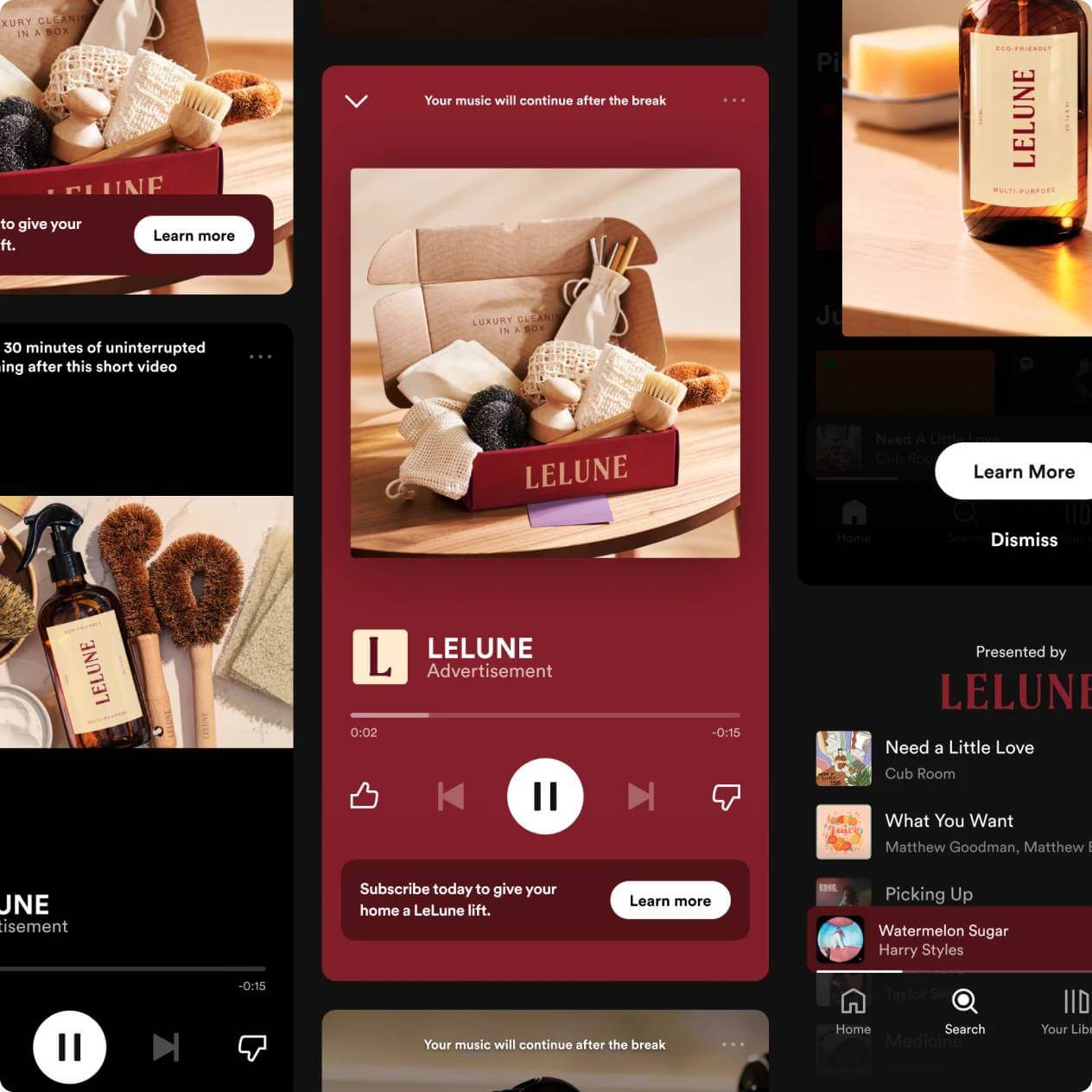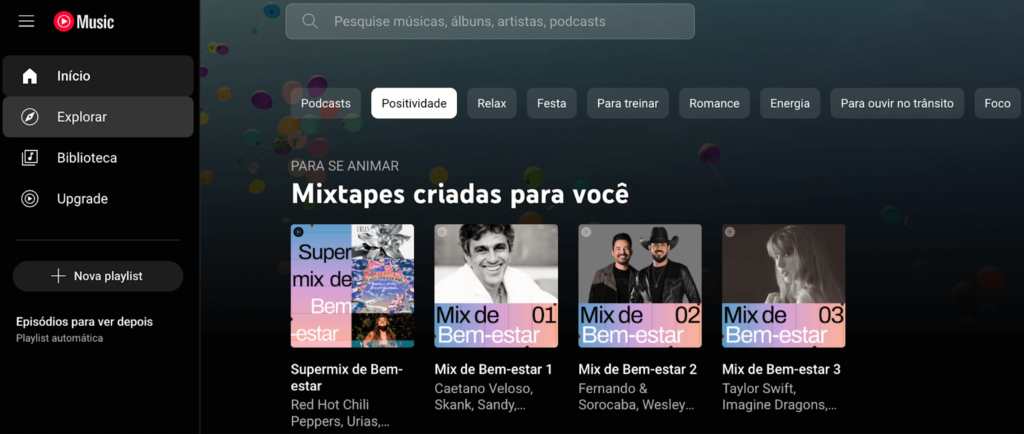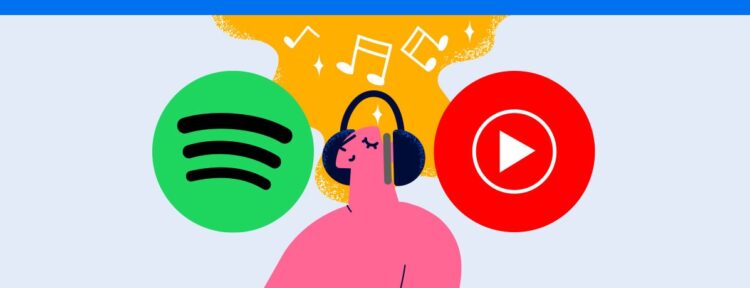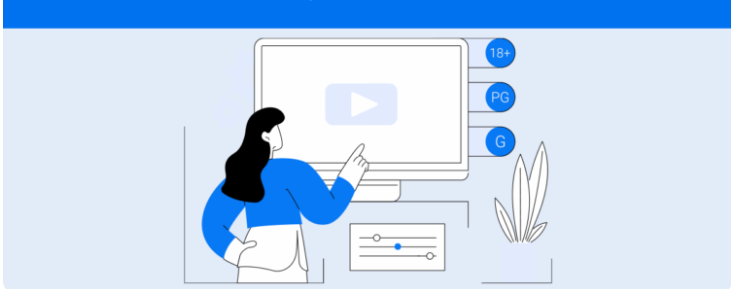See the comparison between the two platforms and find out which one is ideal for your brand’s needs: Spotify or YouTube Music.
When we talk about audio streaming platforms, two names stand out for those working with paid traffic. Spotify and YouTube Music.
After all, both channels have opened the doors for small to medium-sized businesses and agencies to create segmented and measurable campaigns, something unthinkable in more traditional media like radio.
Thus, we have prepared this guide to directly compare Spotify Ads and YouTube Music Ads and help you choose the right platform, whether to strengthen branding or reach niche audiences. Follow along.
What are Spotify and YouTube Music
But first of all, it is essential to understand exactly what Spotify and YouTube Music are and how these two platforms currently impact the market.
Founded in Sweden in 2006, Spotify pioneered the subscription streaming model and today exceeds 675 million active users per month in over 180 countries.
In addition to music, the platform has become one of the largest global podcast players, also offering video formats and exclusive series.
For advertisers, this means a wide variety of formats that can be used to deliver messages at the exact moment when the person is receptive.

Meanwhile, YouTube Music launched globally in 2015, is Google’s music service that leverages the entire catalog of official clips, live recordings, remixes, and existing content on YouTube.
The number of paid subscribers exceeds 125 million, but a huge number of people access the platform for free every month, often switching between traditional videos, the Music tab, or Podcasts.
In fact, the hybrid format of audio with video is one of the major differentials of this channel that is gaining more and more space in Brazil.
From the advertiser’s point of view, YouTube Music integrates completely with Google Ads, allowing you to use the same Search audiences, Display, and Video 360 to develop an even more integrated campaign strategy.

Difference between Spotify Ads and YouTube Music Ads
But to decide which platform to invest in, it’s essential to understand what each can offer for your strategy.
Therefore, you will see comparisons of audience profiles, formats, segmentations, advantages, and a summary of ideal scenarios for using each one. Let’s go.
Audience profile on each platform
To begin, let’s talk about the audiences reached by both channels.
On the Spotify approximately two-thirds of listeners are in the age group of 18 to 34 years. In other words, they are college students, young professionals, and podcast fans who tend to listen to playlists for hours on end.
And since a large portion of this audience uses headphones, the ad reaches a nearly private environment, perfect for capturing attention and memorization.
On the other hand, YouTube Music reflects the huge variety of traditional YouTube, even though the age group of listeners who use the platform the most is between 25 and 34 years, it reaches from teenagers to people over 45 years old.
Since many of these users can enter via the YouTube app and slide to the Music tab, ad campaigns gain simultaneous presence on desktop, mobile, and smart TV, expanding reach without extra effort.
Available ad formats
Before diving into the costs of Spotify or YouTube Music, it is valid to understand how each platform displays its ads and the experience they provide to the user.
Below, check out the table that brings together the main formats and their differentials.
| Platform | Main formats |
| Spotify | Audio with 15 to 30 seconds Banners displayed during user navigation Video ads in Sponsored Session that offer 30 minutes ad-free after the user watches the piece Podcast Ads |
| YouTube Music | Audios up to 30 seconds Banners displayed during navigation and clickable Video ads before or after the content |
Budget and segmentations
Without a doubt, Spotify Ads offers good flexibility to fit the budget to the advertiser’s reality..
Thus, when configuring your campaign, you can define how much you want to invest in total, the period for which your ads will run, and how often you want them to appear.
Furthermore, it is possible to define segmentations by age, gender, location, device, thematic playlists, musical genres, and much more.
On the other hand, YouTube Music uses the same auction as the YouTube Ads to display its ads. Thus, there is no minimum value to start, but costs can vary depending on the audience and competition.
Segmentation options include interests and affinities, topics related to your brand, demographic information, devices used, among others.
Advantages of each channel for branding and performance
Having said all that, we can see that both platforms can be quite beneficial for those who invest in them.
For example, Spotify delivers
- Concentrated attention since the audio is the protagonist and the listener rarely skips the ad.
- Moment-based context buying media in thematic playlists such as those for study or travel helps ensure alignment with the user’s interests.
- Sponsored Session brand exclusivity for half an hour, which is ideal for launches.
- Podcasts on the rise insertions in the middle of the content can be boosted with advertising actions within the episode itself, read by the presenter, which increases trust.
Meanwhile, YouTube Music Ads can be very useful by offering
- Visual and sound reach that combines track and image, reinforcing the brand’s identity.
- Competitive CPM compared to other platforms on the market.
- Google Integration same Ads account to create strategic segmentations and measure campaign results.
In other words, both platforms are extremely valuable to advertisers. Therefore, the decision of which to use will depend on individual needs.
Scenarios where each platform is more suitable
It’s not always worth insisting on the same channel for every type of goal.
Therefore, see below some common goals and which platform usually offers the best cost-benefit in each case.
| Campaign objective | When to prioritize Spotify | When to prioritize YouTube Music |
| Local awareness | Regional companies, clinics, colleges that want exclusive voice in well-segmented playlists. | Brands that need rapid volume in several cities without paying high CPM. |
| Sensorial branding | Products related to wellness, lifestyle, or audio since the 100% sound message brings empathy. | Items with strong visual appeal, such as fashion or gadgets, that benefit from thumbnails or video. |
| Performance | Campaigns that aim to remind the user to return to the app, download a podcast, or visit the physical store after auditory stimulus. | Traffic, lead, or online purchase objectives, as the click occurs within the Google player. |
| Test audience | Smaller budgets focused on niches to use segmentation by artist or musical genre. | Full funnel strategies using search data and remarketing to encourage conversion. |
How to analyze data on Spotify or YouTube Music
Even the best creative piece loses value if you don’t closely monitor the results it delivers. Therefore, both platforms provide complete reports, each in its own dashboard.
On the Spotify Ad Studio you can track metrics such as impressions, unique listeners, audio completion rate, clicks, and CTR.
Additionally, if advertising on podcasts, the dashboard also details downloads per episode and retention over minutes, allowing you to discover at what point the listener decided to stay or leave.
In YouTube Music within Google Ads there are columns dedicated to impressions, completed audios, and the classic view rate for videos.
You can also compare the results with other campaigns run on Google’s advertising platform, which can make your strategy more complete and efficient.
How to decide between Spotify or YouTube Music
Finally, choosing between Spotify or YouTube Music does not need to be an all-or-nothing decision.
Therefore, first of all, consider questions such as:
- Where does your audience spend most of their time? Young university students tend to live on Spotify, while entire families navigate the YouTube ecosystem.
- What is the message? If the storytelling relies on image or demonstration, YouTube Music has an advantage. However, for short slogans, jingles, or spoken CTA, Spotify may deliver a better return.
- How much can you invest? Lean budgets gain greater initial scale on YouTube Music, but a higher CPM on Spotify may mean less dispersion and more quality.
It is also worth noting that most companies find the best results when dividing the budget between the channel that generates greater initial reach and the one that reinforces frequency and memorability.
Therefore, start with tests and smaller amounts on each platform, compare the metrics, and then redistribute funds between the platforms.
After all, combining the immersive audio power of Spotify with the audiovisual reach of YouTube Music can generate campaigns that are richer, more efficient, and above all, unforgettable for the audience.
Take advantage and also read YouTube Algorithm: How to Use it to Your Advantage



